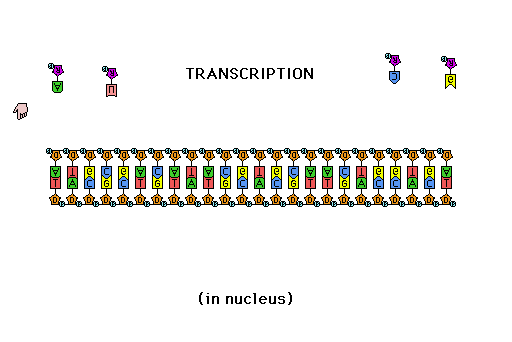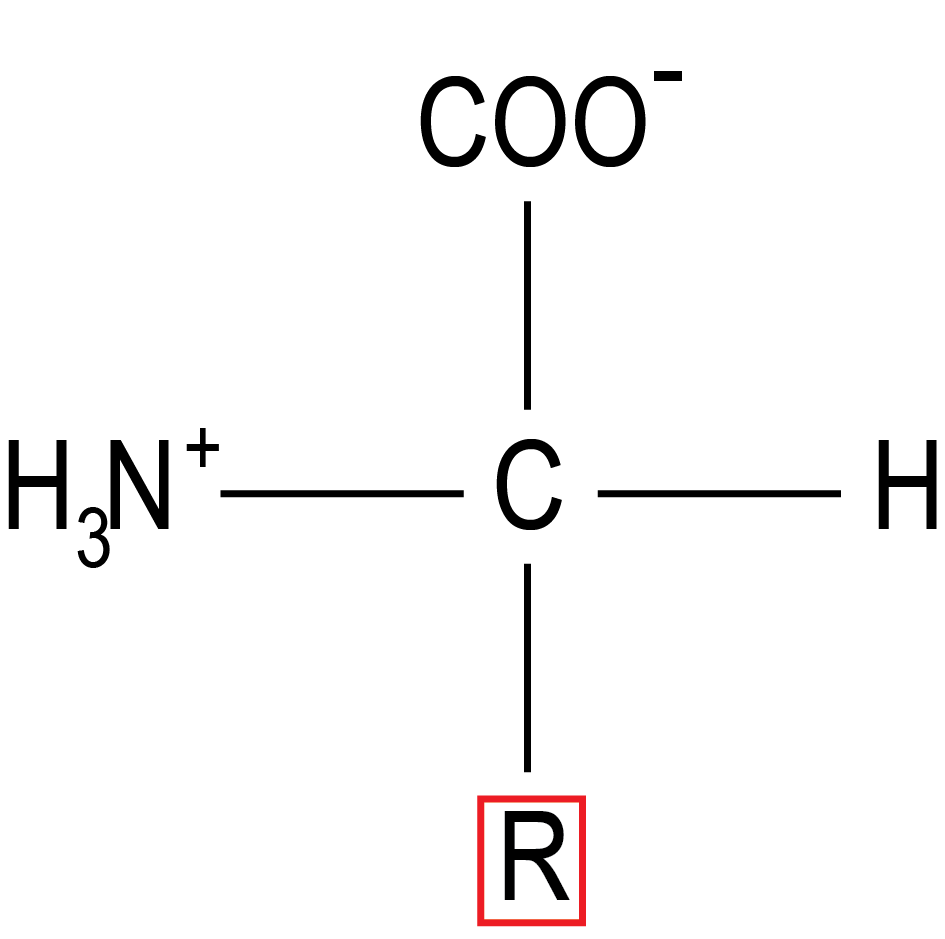5.5 RNA is Translated into a Polypeptide
After mRNA is processed, the final transcript has a rendezvous with ribosomes and transfer RNA (tRNA). Once the mRNA attaches to the ribosome, translation begins. During translation, the transcribed mRNA is matched with specific tRNA molecules, which are each attached to a corresponding amino acid. These amino acids are bound to each other by peptide bonds forming a polypeptide. In this way, a linear sequence of RNA bases is translated into a linear sequence of amino acids.

Check Yourself
What are amino acids?
Amino acids, the building blocks of proteins, are relatively small molecules that consist of an –NH2 group, or amine, a carboxylic acid, or –COOH group, and a side chain (“R” in figure 6) that is specific to each amino acid. For example, the amino acid glycine is the simplest of the amino acids, with a single hydrogen (H) as its functional side chain. Although at least 500 amino acids have been identified, only 20 are found in the proteins produced by most organisms. When amino acids bind together through peptide bonds, the carboxylic acid group of one amino acid attaches to the amino group of another amino acid, creating a linear sequence of amino acids that is called a polypeptide.

Content on this page was originally published in The Evolution and Biology of Sex by Sehoya Cotner & Deena Wassenberg and is reproduced here in compliance with the original CC-BY-NC 4.0 license.

